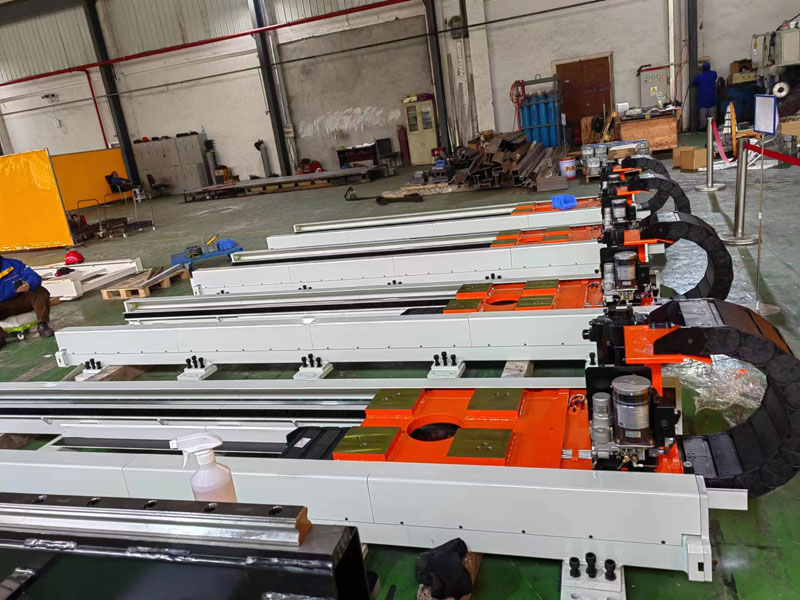With the development of the times, intelligent equipment is more and more widely used in the industrial field. In particular, automated production enterprises need more intelligent equipment. Truss robot is just the product born under this circumstance. It not only saves a lot of labor costs, but also improves the production efficiency, which can be said to be more at one stroke. However, when using this kind of equipment, we also need to know more about the truss robot, so that we can better use it to do things for us. What is the composition of truss robot? Let's take a closer look.
Generally speaking, the structure of truss robot is relatively simple, including the execution system, drive system, control system and orientation detection system. The enterprise can complete the task of producing and processing commodities.
1、 Execution system
The execution system of the truss robot undertakes the main operation tasks. It has many components, such as manipulator, wrist, arm, column, etc.
1). Manipulators, which are directly involved in the processing and production of goods, usually come into contact with goods.
2). The wrist, as the connection between the manipulator and the arm, can adjust the orientation of the goods to be contacted.
3). The arm is also a key component in the execution system, and it and the column are the backbone of the entire operation task.
4). Needless to say, the stand is the fundamental part of the entire execution system. No matter the manipulator, wrist, arm and other movements are based on the base to complete.
2、 Drive system
This is the driving device for the truss robot to perform production and processing tasks. It consists of power, conditioning and auxiliary equipment. Some common driving modes include hydraulic, pneumatic and mechanical driving modes.
3、 Operating system
When running the truss robot, the role of the control system is to assign a manipulator to complete the required action.
4、 Bearing detection system
This part is to control the moving direction of the manipulator, feedback the moving effect through various detector pieces, so as to achieve continuous fine adjustment, so that the manipulator can reach the designated position, contact the products to be processed and produced, and ensure that the robot can accurately complete the task of production and processing.
In addition to the above hardware composition, there is also the software part, that is, the program. Guide the robot to complete the corresponding task through the program. All actions of the truss robot need to be controlled by the program, so as to ensure the operation sequence of each component and complete the task orderly.
We can see that the manual processing and production operations have a sequence, simple work and high repeatability. However, it is not easy to replace manual operation with truss robot, which needs to be combined with software and hardware to achieve the goal.
To sum up, after reading the above introduction, I believe you have a certain understanding of truss robot assembly. As a numerical control processing industry, in order to keep up with the progress of the times, we must start from the update of intelligent equipment, and the use of truss robots is also an inevitable trend. With the truss robot, not only the production efficiency is improved, but also many big problems are solved for human beings. Some things with high risk, high intensity, single and repetitive work can be completed by such a highly intelligent robot. In a word, the truss robot completely solves the problem of disconnection between mechanization and automation, and contributes to the improvement of the enterprise's competitive strength.